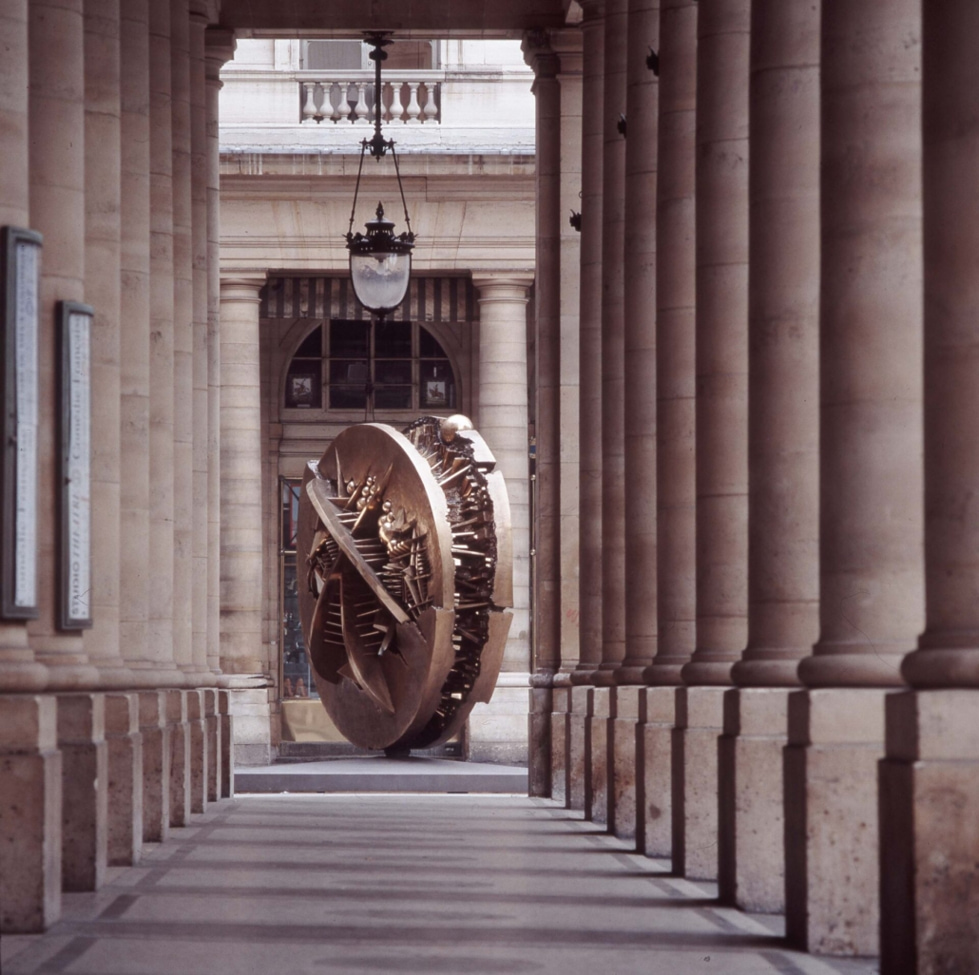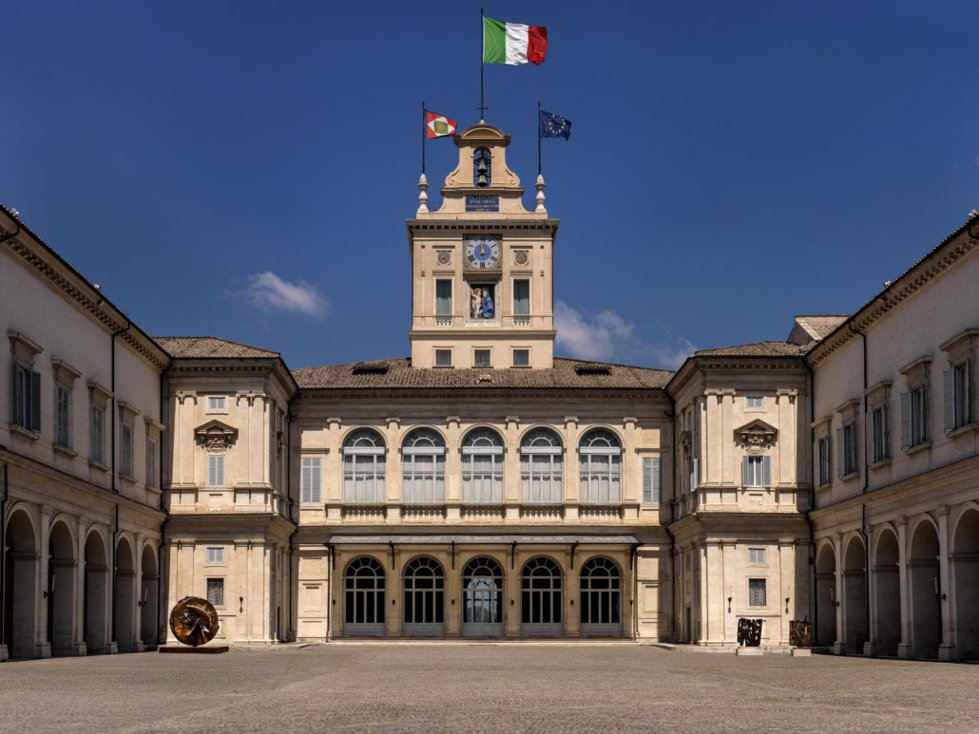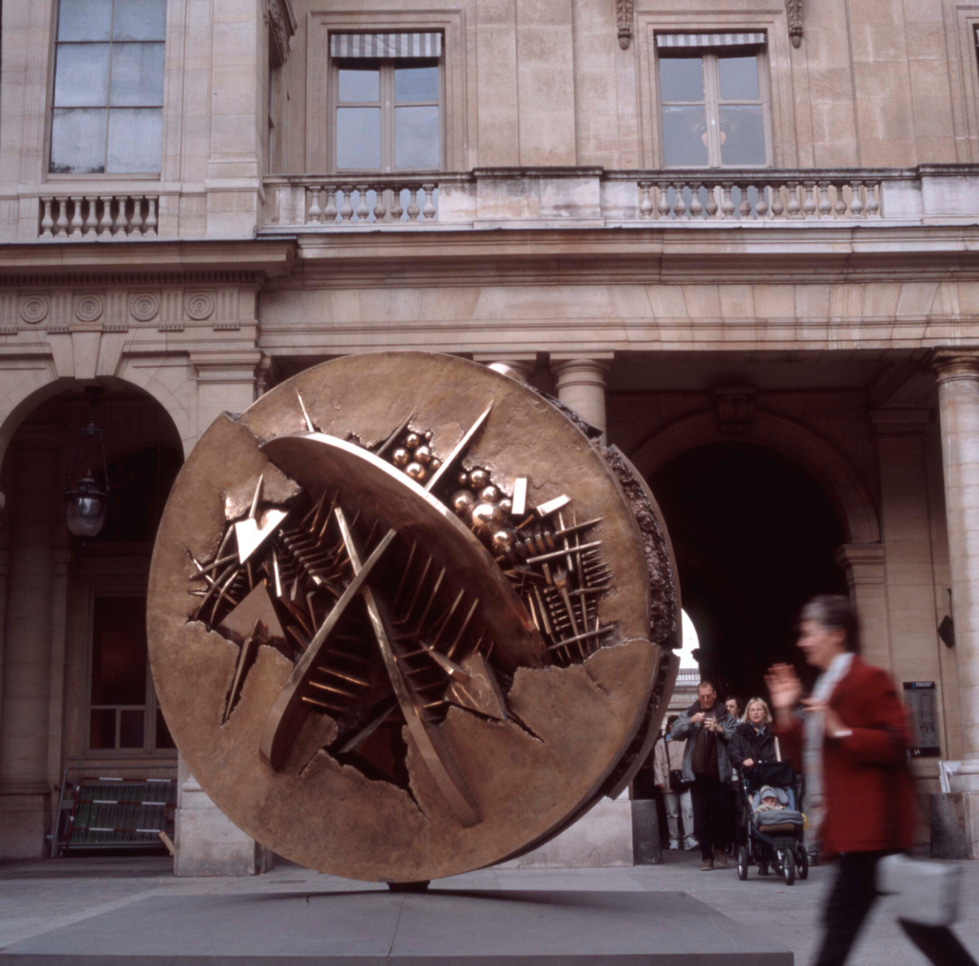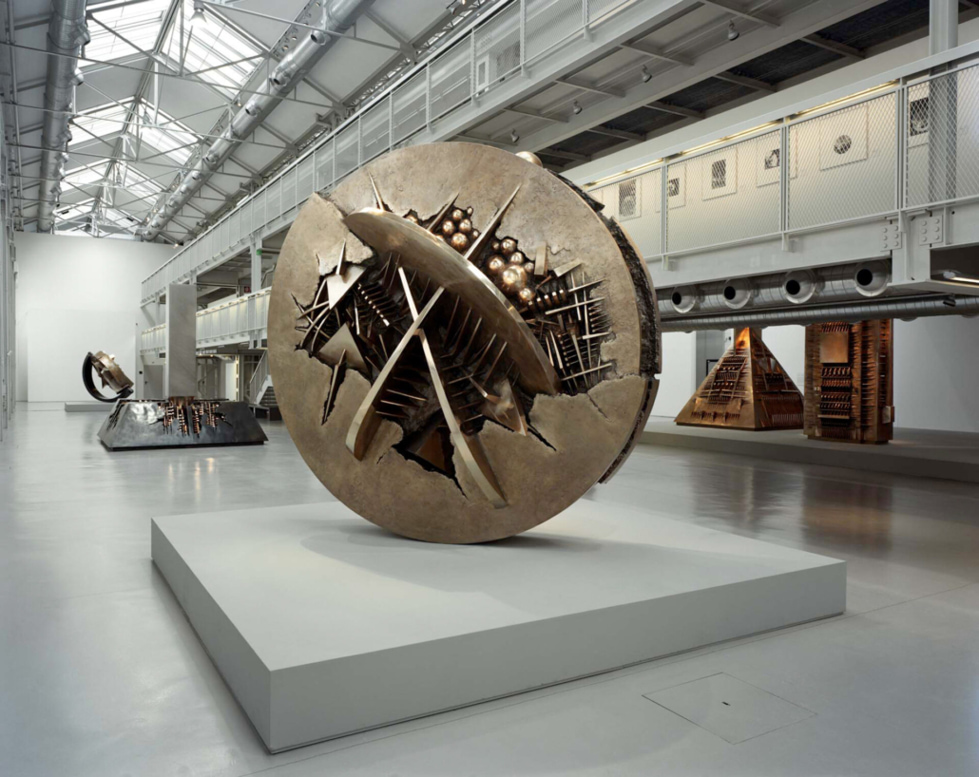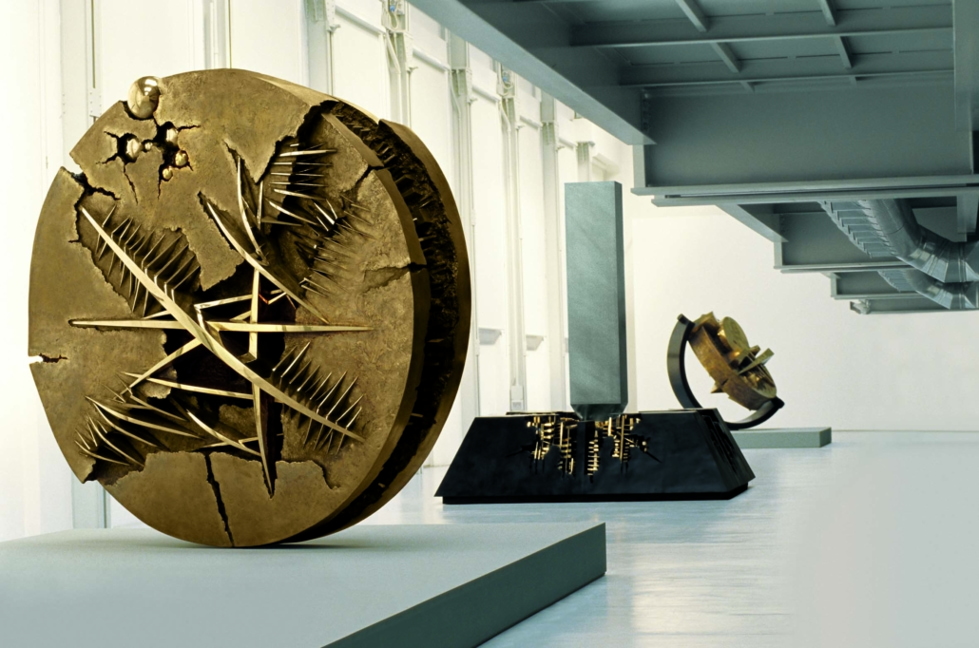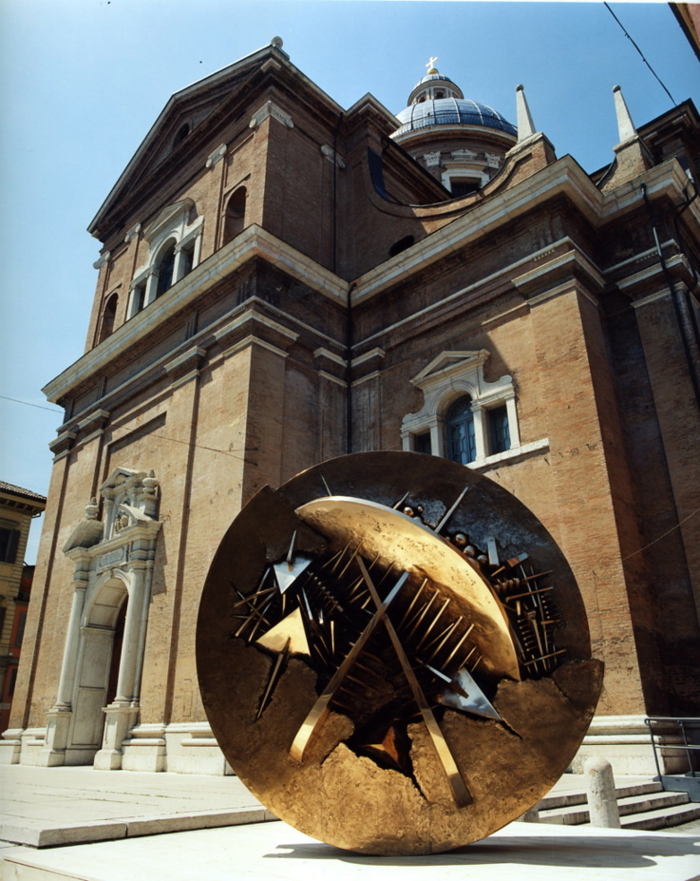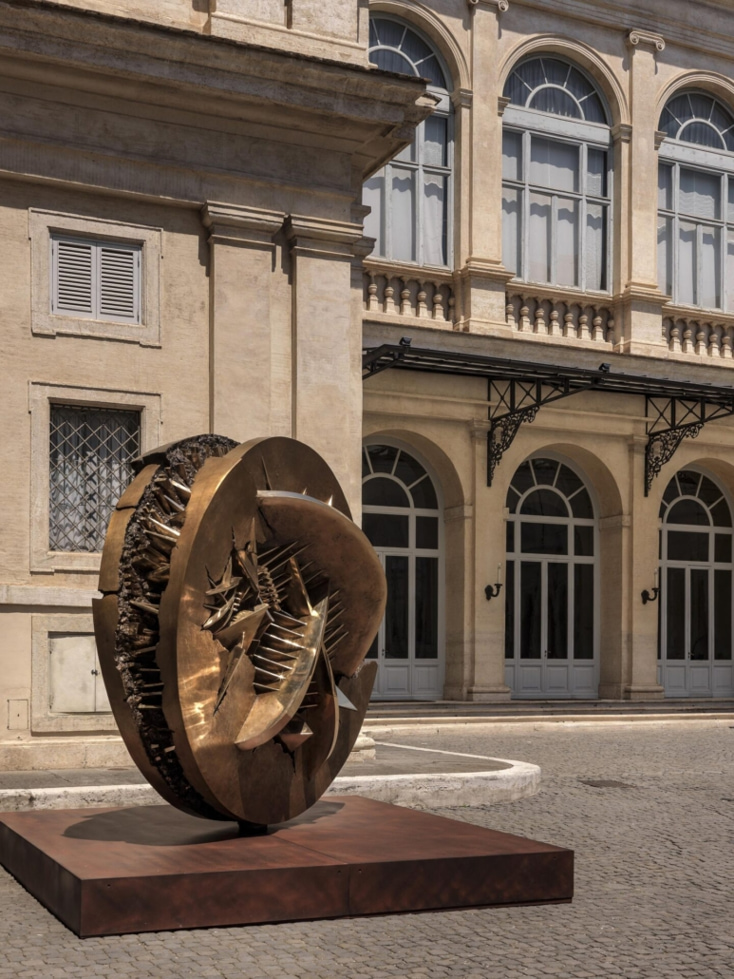
Arnaldo Pomodoro
Disco in forma di rosa del deserto n. 1, 1993-1994
bronze, 620 × ø 320 × 100 cm
As can be seen from the title, the inspiration for this sculpture comes from the mineral formations of crystals that mysteriously emerge from the desert sands of Africa. With the ancient technique of bronze casting, Arnaldo Pomodoro reconstructs the natural process of crystallization.
Speaking about his works, the artist has repeatedly declared that he does not believe in inspiration, but rather in suggestions and flashes that come in the most unthinkable moments and in the most diverse situations. “We artists – says the sculptor – are endowed with a particular sensitivity in absorbing and expressing what is around us, sometimes without even understanding where we can get to.” Man and his history, nature and the course of events are the main sources of inspiration. “For me – continues Pomodoro – the work is always in relation to environments, to concrete contexts that I have visited and known. Thus, some of my sculptures that refer to nature are not connected to an essentialized and abstract idea of nature, but to the concreteness of the landscape and the environment.”
Roberto Sanesi states: “In this work the formal relationship with the desert roses is precise and the allusion is a metaphor for the laborious and yet unstoppable principle of germination. Disco in forma di rosa del deserto responds to a real system of signs and planes (cracks, contrasting reliefs, 'excavations' of the material as well as of its meanings) capable of articulating an overall unity series of elements.” Observed in profile, the disc reveals the tension and stretching between the two faces, bringing to view the internal rib and the beating heart of the material. On the contrary, sharp blades and globular concretions erupt from the external faces. “The form radiates from within. – continues Roberto Sanesi – On a stylistic level, a living body in which the suggestions of the informal and abstraction, of the archaism of signs, of the most sophisticated technology and of Renaissance monumentality meet. If Pomodoro's have always been forms in progress, here the constructive process through oppositions is more evident than ever."
Do you want to know more about this work?
Go to the Catalogue Raisonné online!


